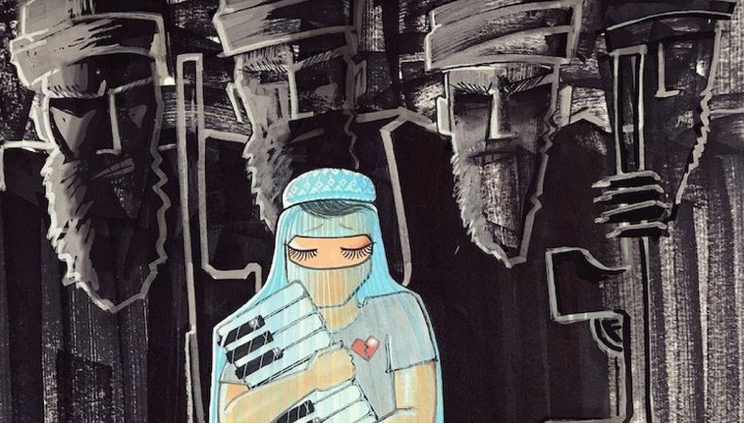SAY WHAT? - Despite U.S. assurances of "safe evacuation" for Americans and their allies, reports from Afghanistan describe harrowing scenes of chaos and violence after the swift Taliban takeover.
In Kabul, thousands of people, even those with U.S. visas or passports, are unable to reach the gates of the airport, never mind get on the flights they've been promised; instead, they are among packed crowds "trapped in hell," with little food or water, amidst a rising stench of garbage, at the mercy of Taliban soldiers on all sides who have already killed over 20 people. "There’s horror in everyone’s eyes,” says a stranded woman, one of over 14 million Afghan women most in peril from extremists already tearing down beauty parlor images and whipping women at the airport who don't obey their orders fast enough - this, in a country long deemed one of the most dangerous in the world for women. As many women hide at home, fearful of what comes next and burning any evidence of links to the West, others have taken to the streets as the "face of resistance," intent on keeping freedoms hard-won in the over 20 years since the Taliban was in power. "They have one message - this is not the Afghanistan of 1996," said a reporter for Gravitas as she showed video of "braveheart" women marching, chanting, wearing the Afghan flag as a hijab, often at the point of a Taliban gun. "Have you wondered what courage looks like? This is what courage looks like." Arguing "Afghan women know exactly what is in store for them," she urged the rest of the world to help protect them. "Their stories are heartbreaking," she said, "and they must be told."
For Shamsia Hassani, celebrated as Afghanistan's first feminist street artist, those stories of her troubled country can best be told with art. "People get tired from words," she says. "Art is a friendly way to fight every kind of problem." Born as a refugee in Iran in 1998, when the Taliban ruled Afghanistan, she returned to her country in 2005 wanting to help heal it, to "change its bad image a little to make it famous with art, not for war." "Art changes people's minds," reads her website, "and people change the world." After getting her art degree at the University of Kabul, she became a lecturer there. One of a handful of female Afghanartists, Hassani began painting on empty, war-torn buildings, aware that few Afghans ever got to museums. When it started to feel dangerous as a woman working in public in a still-violent country, she created a "Dreaming Graffiti" series in which she took photos of her city and then painted over them. More recently, as more Afghans fled the country, she embarked on a "Birds of No Nation" series; like birds "always traveling," she says, "They are feeling they have no nation." Women are central in Hassani's work, which she now posts online, in pieces like Nightmare and Death to Darkness. Often, a lone woman in a blue hijab, with closed eyes and no mouth, offers up a fragile symbol of hope or freedom - a plant, a light, a musical instrument - to dark, armed, ominous male figures in silhouette. After years of women's exclusion from society, Hassani wanted to show their strength and joy. Until last week, she hoped to "introduce a new Afghanistan to people...It's a new woman, larger than life." Today, sadly, it remains unclear if that woman will survive.
To help her, visit Women for Afghan Women and Flyaway: Emergency Afghan Rescue Mission.
(This article was first published in Common Dreams)






